I haven’t really mentioned knitting here before, but those who know me well will know that I knit constantly. One of the great pleasures of spinning is being able to knit the things that I spin, although I don’t do it as often as I should. Below are a few of my knitting-with-handspun experiences and some good tips that I’ve learned along the way!
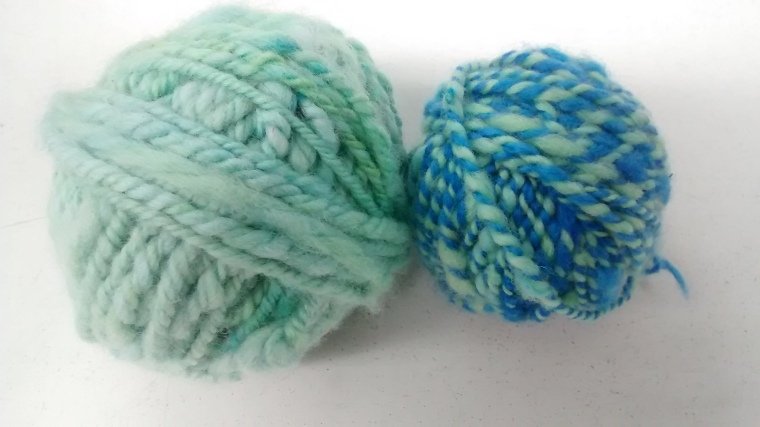
Above are my first knit-able handspun attempts. I did them from raw fleece from Clive the pet merino-cross that I washed, dyed, and hand carded. They’re very unevenly spun, and have some big felted chunks in them, from where I struggled to card with any kind of proficiency. Very beginner attempts, really, but they were very special because they marked the beginning of my love of spinning. I knit them into a string of bunting for my niece and crocheted her name onto them. Because of the unevenness of the yarn, it was a bit of a challenge, but I also found that this kind of project is a lovely way to enjoy the crazy texture of a yarn like this. The felted slubs that I had spun into the skeins because of my lack of skill ended up being lovely texture.
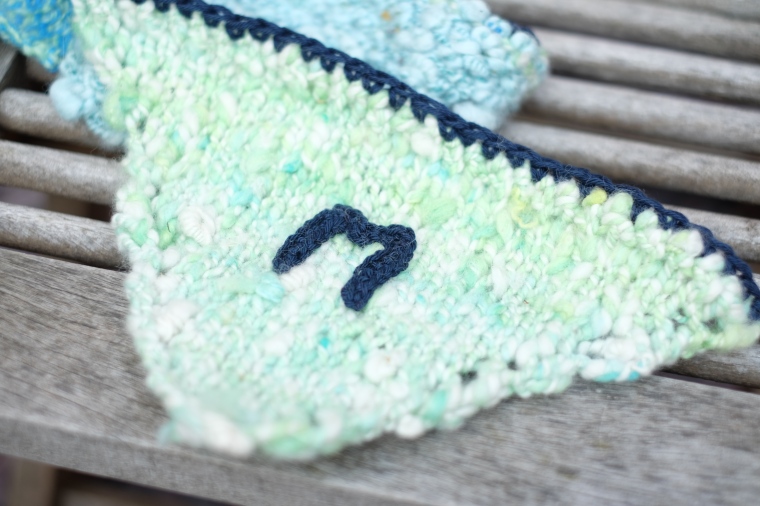
Next attempt was more ambitious. I had spun up the following two skeins: Red handdyed merino cross plied with Australian Alpaca, and yellow and red handdyed 2-ply merino cross. All merino cross was process from the raw fleece of Clive the pet sheep.
Both these skeins were carding and plying accomplishments for me, and so I decided to knit them into the yoke of a jumper. Which turned out like this:
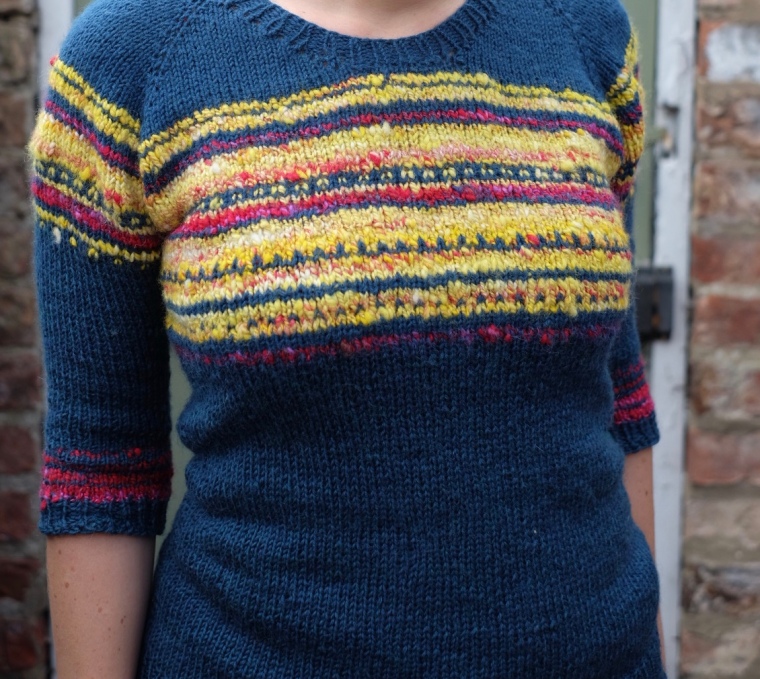
I love this jumper to pieces. But I had a bit of a problem…
When I started out I figured out an average wraps per inch for the handspun, and deemed it to be a worsted weight. So I chose some nice worsted weight commercial yarn and knit the whole thing as if the different yarns were the same. But of course the handspun wasn’t. And as a result I have bagging along the raglan line above the armpits, and over the tops of the sleeves. It’s pretty clear in the above photo. Every so often, when I wear this and look in the mirror, the bagging of the handspun drives me nuts and I wish I’d been more sensible and swatched it first.
This brings me to my first tip…..
Gauge swatch and do the math! Do it!
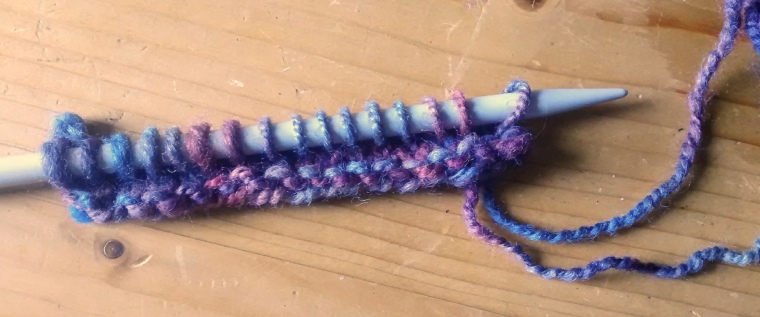
Especially do this if your handspun is textured. You may need to adjust needle sizes, or adjust your stitch count when switching back and forth between yarns. Remember that going down a needle size might make the knit handspun too dense and it won’t drape the same way as the rest of the garment. Or maybe you need to go up needle sizes and decrease stitches so that the knitting is looser for a proper drape.
I employed this with success in my most recently finished project.
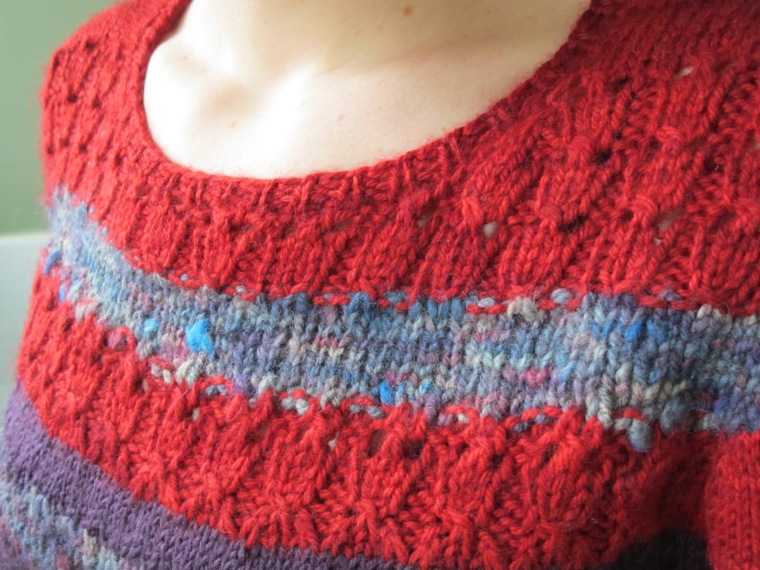
This pullover incorporated a beautiful skein of my friend Sylvie’s handdyed yarn (check out her Etsy shop: Phileas Yarns ) with this handspun and handpainted BFL:
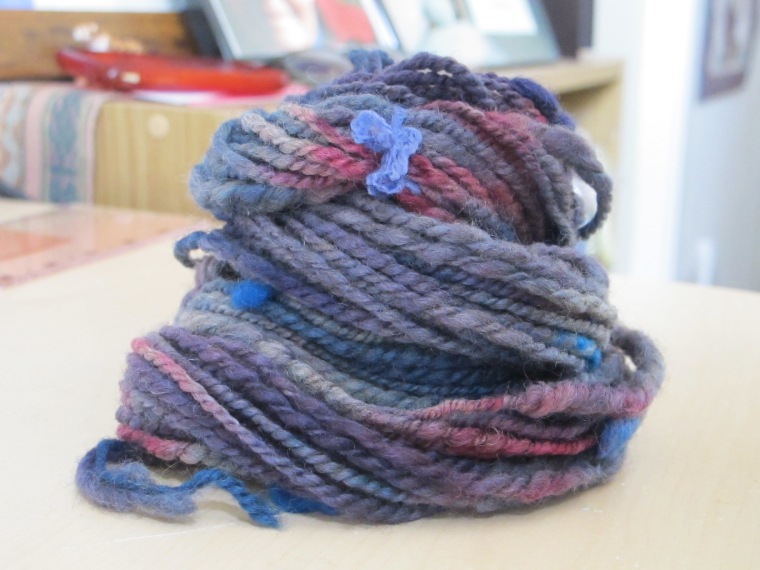
While the handspun was approximately an aran weight, like the other yarns, it knit up to be 4 stitches/inch while the other yarns were 5 stitches/inch. Actually a pretty big gauge difference when multiplied over the circumference of a jumper. On first go I went down a needle size for the handspun, but it wasn’t precise enough and I had funny baggy bits and the knitting was too dense compared to the nice drape of the rest of the yarn. So I pulled back the yoke and did it again. This time I decreased one every five stitches when switching to the handspun, and increased one every four when switching back. The result is perfect! And the changes in stitch count are not too noticeable.
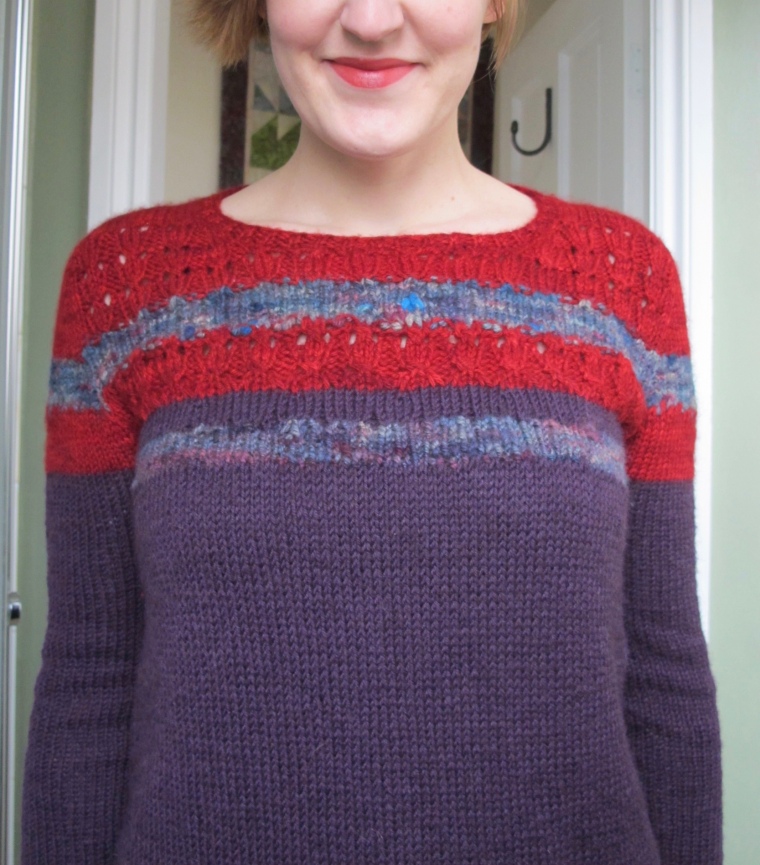
Wearing something that you’ve spun yourself is one of the greatest joys of knittting!
Next post, I’ll continue and talk about shawl knitting and mixing sheep breeds when knitting with handspun. Stay tuned!!!!
All images and content copyright ©Martha Welland, 2015
Please credit spunplum.wordpress.com if sharing any images.





